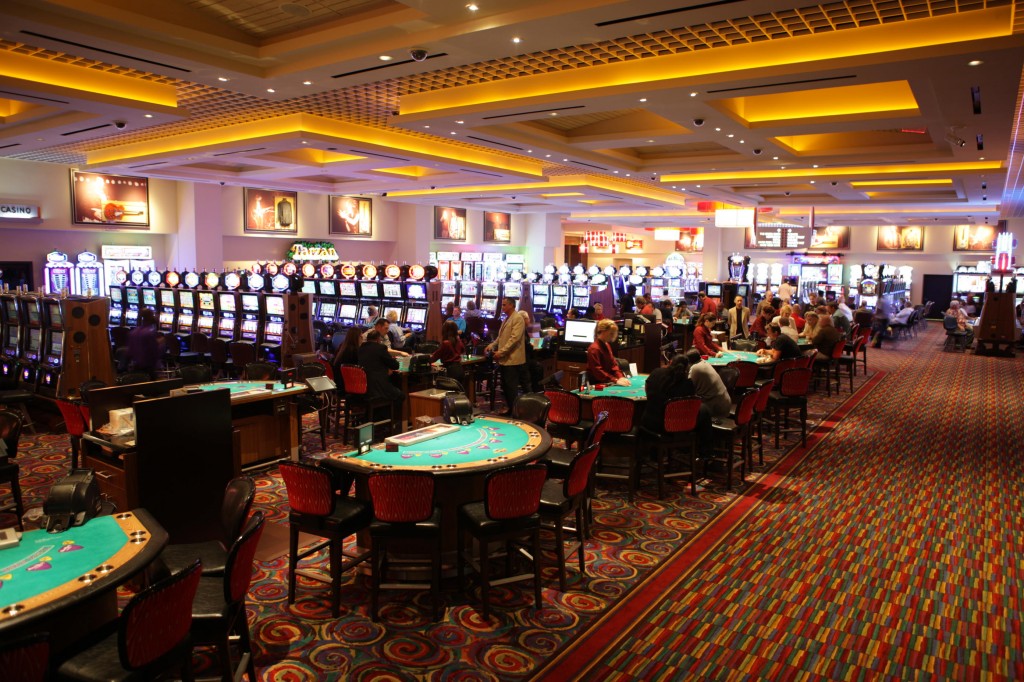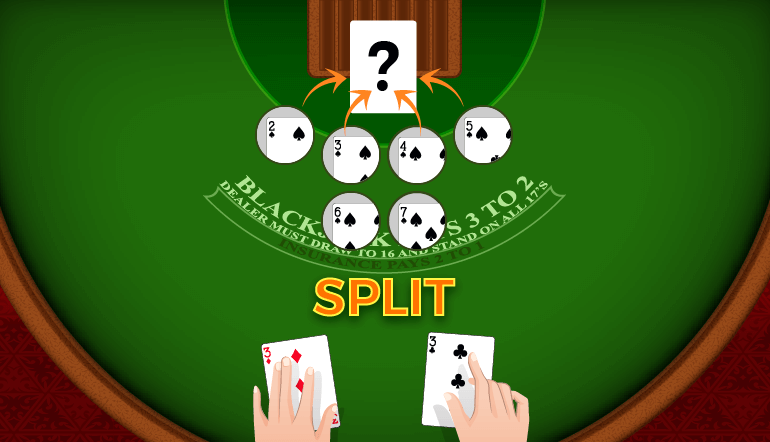Blackjack is any 10-value card or a Royal with an Ace. The payout for Blackjack is 3:2. That means you get $150 on a $100 wager. Hand values that sum to 21 but aren’t made of an Ace and a 10-value card are worth less than Blackjack. Super Stakes Blackjack is played with 4 decks of 52 cards. This is the casino’s sole advantage in blackjack, and if everything else were equal, and the player “mimicked” the dealer’s playing rules, the house edge in blackjack would be about 8%. (The dealer and player each would have about a 28.3% probability of busting, if they played in the same manner; therefore, 0.283 times 0.283, or about 8.

Casinos burn the first card after a shuffle to minimize any player cheating if he or she caught a glimpse of the card. The rules for video blackjack are often not as good as a live game, especially the payoff for a blackjack hand. It’s better for a basic strategy player to play on full tables. 1.1 Blackjack Rules. Before you can begin to learn blackjack strategies, you’ve got to get the lay of the land (so to speak) on how the game is played, specifically the basic blackjack rules, the objective of the game, the player’s options, the dealer’s rules, and a few protocols to keep you out of trouble. Blackjack is a dynamic game. It is a game shifting percentages, where each card that is played either adds too or, takes away from the initial advantage the casino has over the player. It is also the most mathematical orientated game offered by gaming companies, but it's also a great experience for online players.

Understanding the number of decks used and the rules being applied are a vital part of advantage player’s strategy when attacking blackjack games for profit.
888 Casino Blackjack Rules How To Play
- In the late 1950s when Las Vegas and by extension casino gambling first started making an impact the only variation of blackjack that existed was the single deck game with good rules.
- This means dealer standing on soft 17s, doubling after splitting and 3:2 payouts on all naturals.
- The game was only a small fraction of a percentage point in favor of the house while just playing basic strategy developed by Ed Thorp in his book Beat the Dealer. After the Thorps analysis changes started being implemented to increase the houses advantage over the player.
- First, all at once; this caused a dramatic drop of in player rates. After a few months the casinos were forced to reinstate the original rules, and the player rates surpassed the original levels. The casinos then began introducing subtle rule changes over time.
- First the number of decks increased, and then various rules changes that gave the house an increased edge. Here, we will discuss how the number of decks and the various rule changes affect the houses edge.

888 Casino Blackjack Rules For Real
% EFFECTS OF INCREASE IN DECKS
| Number of Decks | Change in % |
|---|---|
| 1 | 0.01 |
| 2 | -0.34 |
| 3 | -0.45 |
| 4 | -0.5 |
| 5 | -0.53 |
| 6 | -0.55 |
| 7 | -0.56 |
| 8 | -0.57 |
Noted Blackjack Author Bryce Carlson states there are multiple reasons on why the player’s advantage decreases as the number of decks increase. The two most impactful situations involve naturals and double downs. In a 6 deck game the player will receive approximately 1.61% fewer naturals than in a single deck game. Similarly, the chances of catching a 10 on 6 deck game is an roughly 3.23% less than on a single deck game.
Another concept that occurs in multiple deck games over single deck games is that multiple deck games run flatter than single deck games. This means that the distribution of cards is more consistently normalized than in a single deck game. This reduces the number of times that a preponderance of high cards remain left to be played. This reduces the effectiveness of card counting by Advantage Players. It is easy to see why the casinos decided to implement the multi-deck usage.
The increase in the usage of number of decks was the first part of the changes introduced by casinos to increase the advantage the house has over the player. The second part was the rules used by the casinos in the game of blackjack. I’m going to go over a few of the major rule variances seen in 21, and then present the effect of the exact rule changes in for each rule seen in blackjack in table form.
The most predominant rule variation in blackjack is whether or not the dealer hits or stands on a soft 17 total. When the dealer hits a soft 17 total the houses advantage increases by 0.20% over the player. In multiple deck games a desirable rule for the player is the late surrender option. This is where the player has the option to give up one-half of their bet and give up the hand. This option adds an additional 0.01% edge for the player. The final rule we will discuss is used quite a bit in Europe and is the “dealer doesn’t take a hole card.” There are 2 variations to this rule. The first is when the player only loses the original bet when the dealer gets a natural. This has no effect on the advantage of the player. The second variation is when the blackjack player loses both bets on the dealers natural. This gives the house an additional advantage of 0.13% over the player. These are the most influential rules seen in blackjack variations. The following table list all the rule variations as well as the change in percent advantage.
HOW THE RULES CHANGE THE ADVANTAGE
| Rule | Change in Advantage |
|---|---|
| Double Down on 11 only | -0.79% |
| Double Down on 10 & 11 only | -0.28% |
| Double Down on 9, 10 & 11 only | -0.14% |
| Double Down on 3 or more cards | 0.22% |
| Double after split | 0.14% |
| No re-splitting 1 deck | -0.02% |
| No re-splitting 2 decks | -0.04% |
| No re-splitting 4 decks shoe | -0.05% |
| No re-splitting 6 or 8 decks shoe | -0.06% |
| No re-splitting ∞ decks | -0.08% |
| Re-splitting of Aces 1 decks | 0.03% |
| Re-splitting of Aces 2 decks | 0.04% |
| Re-splitting of Aces 4 decks | 0.05% |
| Re-splitting of Aces 6 or 8 decks | 0.06% |
| Re-splitting of Aces ∞ decks | 0.08% |
| No Aces splitting | -0.16% |
| No splitting pairs | -0.45% |
| Unlimited to draw to split aces | 0.14% |
| Late surrender 1 deck | 0.02% |
| Late surrender ∞ deck | 0.09% |
| Asian surrender | 0.14% |
| Early surrender | 0.61% |
| Player 21 ties dealer natural | 0.20% |
| Dealer hits soft 17 | -0.20% |